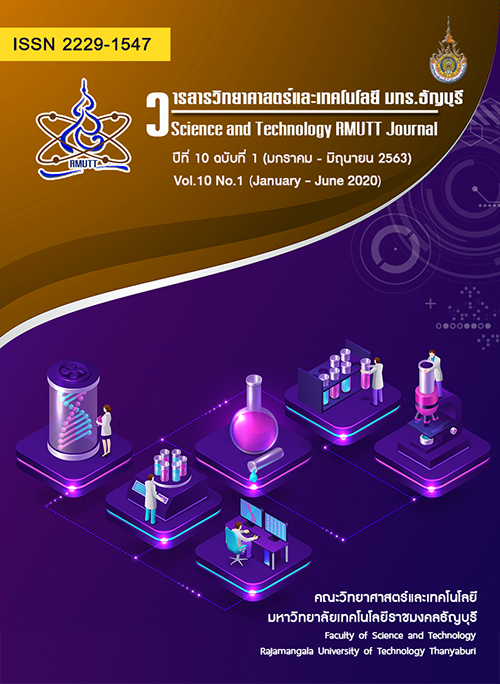Brick production from industrial waste in Nakhon Si Thammarat Province
Main Article Content
Abstract
Industries in Nakhon Si Thammarat Province produce a lot of cement waste during manufacturing of fiber cement roofs. Fiber glass waste and ceiling waste are expire that is very harmful for the environment. The main objective of this study is to use these cement waste for producing bricks. Normally stones, cement, sand, and water are used for brick production, but we would like to include cement waste along with these materials. This study aims to (1) produce bricks using several ratios to increase compressive strength, (2) to produce lightweight bricks for easy transportation and decrease Water Absorption, (3) to increase the capacity (thermal insulation) and (4) the cost effectiveness of cement waste bricks. The best ratio for brick production was stone (22) : sand (8) : water (4) : cement waste (3) : cement (2) for Fiber cement Roof waste, stone (23) : sand (8) : water (4): cement waste (4): cement (2) for ceiling waste and stone (22) : sand (8) : water (4) : cement waste (4) : cement (2) for Fiberglass waste (experimenting with the ratio of volume) because these bricks had the most compressive strength (average strength). The compressive strength of these bricks were 27.2% for Fiber cement Roof waste , 80.57 % for Fiber glass waste and 62.50 % for ceiling waste higher than local market bricks and compressive strength higher than standard bricks. The Spegific heat capacity of these bricks were 17.4 % for Fiber cement Roof waste , 16.76 % for Fiber glass waste and 15.14 %
Article Details
References
จรรยา พันธมา. การประยุกต์เปลือกหอยแมลงภู่และ หอยแครงผสมกับเศษแก้วและขยะซีเมนต์เพื่อผลิตอิฐ คอนกรีต. PhD Thesis. Chulalongkorn University. 2559.
นท แสงเทียน และ ธนภร ทวีวุฒิ. กำลังรับแรงอัดและการดูดกลืนน้ำของคอนกรีตมวลเบาแบบเซลลูล่า. วารสาร วิชาการ วิศวกรรมศาสตร์ ม. อบ. 2015. 8(1) : 91-102.
ธรรณ ชนกเจริญทรัพย์ พิพัฒน์ สอนวงษ์ และ วัชรินทร์ วิทยกุล. การใช้เศษคอนกรีตมวลเบาทำอิฐสำหรับงานผนัง. Kasetsart Engineering Journal. 2018. 31(104) : 111-120.
ยุทธนา แสงจันทร์เอื้อง. การศึกษาการถ่ายเทความร้อนและความชื่นผ่านผนังฉนวนความร้อนภายนอกอาคาร. มหาวิทยาลัยพระจอมเกล้าธนบุรี. 2551.
ตฤณ ทีงาม และ คัชรินทร์เวชชากุล. การศึกษาสมบัติทางกายภาพของอิฐบล็อกผสมโฟม. Journal of Industrial Technology Ubon Ratchathani Rajabhat University. 2017. 1(1) : 123-134.
ธนภร ทวีวุฒิ อิทธิพงศ์ พันธ์นิกุล เกรียงศักดิ์ แก้วกุลชัย และ สถาพร โภคา. กำลังรับแรงอัดของคอนกรีตมวลเบาแบบเซลลูล่า. การประชุมวิชาการคอนกรีตประจำปี ครั้งที่ 9. 21-23 ตุลาคม จังหวัดพิษณุโลก ประเทศไทย. 2556 : 102.
ชัชวาล เศรษฐบุตร. คอนกรีตเทคโนโลยี (Concrete Technology). ผลิตภัณฑ์และวัสดุก่อสร้าง (ซีแพค : คอนกรีตผสมเสร็จซีแพค). กรุงเทพฯ. พิมพ์ครั้งที่ 1. 2536.
มอก. 25-2533. มาตรฐานคอนกรีตบล็อกไม่รับน้ำหนัก. สำนักงานมาตรฐานผลิตภัณฑ์อุตสาหกรรม. กระทรวงอุตสาหกรรม. 2533.
มอก. 109-2517. วิธีการชักตัวอย่างและการทดสอบวัสดุก่อที่ทำด้วยคอนกรีต. สำนักงานมาตรฐานผลิตภัณฑ์อุตสาหกรรม. กระทรวงอุตสาหกรรม. 2517.
มอก. 58-2530. มาตรฐานคอนกรีตบล็อกไม่รับน้ำหนัก. สำนักงานมาตรฐานผลิตภัณฑ์อุตสาหกรรม. กระทรวงอุตสาหกรรม. 2530.
มอก. 58-2533. มาตรฐานคอนกรีตบล็อกไม่รับน้ำหนัก. สำนักงานมาตรฐานผลิตภัณฑ์อุตสาหกรรม. กระทรวงอุตสาหกรรม. 2533.
วิทยาศาสตร์, กรม, ดินฟอกสี, รายงานกิจกรรมของกรมวิทยาศาสตร์, ตุลาคม 2516- กันยายน 2517, ฉบับที่ 33, หน้า 280-284.
สมพูล สุยะสินธ์ และ มัณฑนา พงษ์ไทยพัฒน์. วิทยาศาสตร์, กรม, ดินฟอกสี. กองการวิจัย. กรุงเทพฯ. 2518
สุธรรม ชุมพร้อมญาติ และ อุไรวรรณ วันทอง. รายงานการวิจัยอิฐบล็อกคอนกรีตจากขยะฉนวนใยแก้ว.นครศรีธรรมราช. คณะวิทยาศาสตร์และเทคโนโลยี มหาวิทยาลัยเทคโนโลยีราชมงคลศรีวิชัย. 2555.
อุไรวรรณ วันทอง และ สุธรรม ชุมพร้อมญาติ. รายงานการวิจัยอิฐจากขยะอุตสาหกรรมกระเบื้อง นครศรีธรรมราช. คณะวิทยาศาสตร์และเทคโนโลยี มหาวิทยาลัยเทคโนโลยีราชมงคลศรีวิชัย.2553.
Aramaki, S. and Roy R. Revised phase diagram for the system Al2O3-SiO2. Journal of the American Ceramic Society. 1962. 45(5) : 229-242.
Brindly G.W. and McKinstry H.A. The Kaolinite- Mullite Reaction Series : IV, The coordination of aluminum. Journal of the American Ceramic Society. 1961. 10 : 506-507
Fouad H.F. Cellular concrete. In: Joseph F.L., Jam H.P., editors. significance of tests and properties of concrete and concrete-making material. ASTM International, West Conshohocken. PA. 2006 : 561-569.
Narayanan N. and Ramamurthy K. Structure and proper of aerated concrete: a review. Cement & Concreat Composites. 2000. 22 : 321-329.






